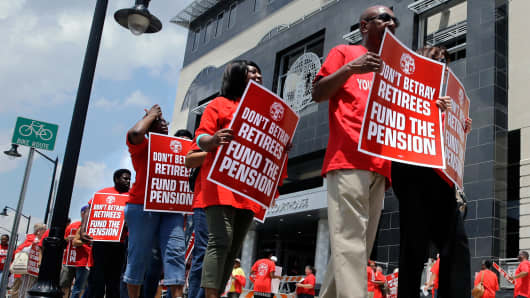Five years after the Great Recession blew a giant hole in state and city budgets, many governments across the country are showing progress in digging out of the historic financial hole.
But with ballooning liability for pensions and retiree health-care costs, they're not out of the woods yet.
That's the message from a national survey of more than 1,500 state and local governments and school administrators conducted by Cobalt Community Research, a nonprofit research group.
The Great Recession hit local governments hard—thanks to a collapse in property values and a slide in income and sales taxes. Since then, the recovery in the job and housing markets have helped rebuild state and local revenues. About a third of the governments surveyed expect revenues to continue rising next year—up from just 13 percent in 2011. Only 17 percent expect revenues to fall, down from 43 percent in 2011.
Read MorePublic pensions face $2 trillion hole: Moody's
Since the recession, tighter budgets unleashed a wave of state and local government layoffs. But while revenues have begun rising again, just 7 percent of governments expect to boost employment. Still, the worst of the layoffs are apparently over; just 7 percent expect to cut jobs.
"They're not in fantastic shape, but they're starting to get a little bit of breathing space," said William SaintAmour, executive director of Cobalt Community Research. "There still very cautious for the most part. When you look at employment levels, they're just filling in the holes to delivery core services."
Even as the economic recovery has helped stop the bleeding, states and cities face ongoing budget pressure from rising pension and health-care costs. In states and cities that have enacted statutory limits on tax increase, those benefit costs are rising faster than those limits—putting added pressure to cut services.
States vary widely in their pension funding shortfall. Illinois, Kentucky and Connecticut, for example, have set aside less than half of what they need to meet pension obligations for current retirees and active workers. Wisconsin and South Dakota, on the other hand, are among a handful of states that are fully funded.





